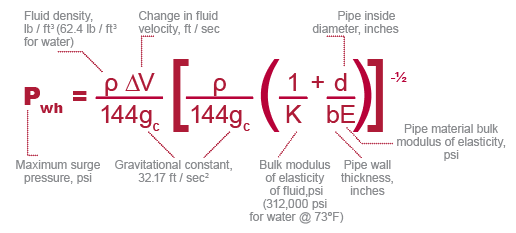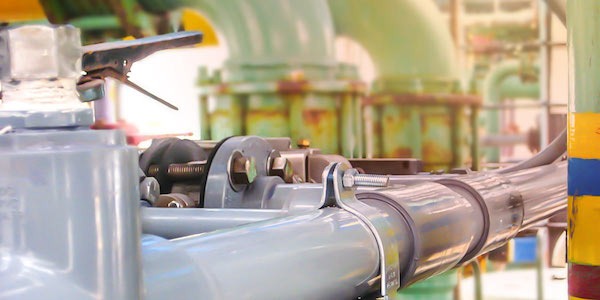How to Optimize a Piping System to Protect Against Surge Pressure Damage
Surge pressure is caused when the velocity of fluid through a piping system suddenly changes, typically by a valve opening or closing. This dramatic pressure change creates a shock wave within the pipes, which travels back through the fluid and exerts pressure on the piping walls and fittings.
This additional pressure puts stress on the piping material and its joints. In combination with normal operating pressure, piping material, fittings, flanges and hangers can weaken with repetitive shock waves, potentially resulting in leaks and other costly issues.
From pipe size to material choice, there are configurations you can design into your system to limit the impact of hydraulic shock and keep the total system pressure (normal operating pressure + hydraulic shock) within the design pressure of the system.
How Do I Calculate Surge Pressure?
Surge pressure is based on a number of factors. Some can be controlled by the designer, such as pipe diameter and velocity, while others, namely fluid properties, are based on the application.
To calculate the maximum surge pressure of a system, use the following equation:

It is important to note that surge pressure is in addition to the system’s operating pressure. So, when designing your system, make sure the combination of both forces does not exceed 1.5 times the working pressure rating of the piping system.
How to Account for Surge Pressure in System Design
As a piping system engineer, there are a few ways to design your system around the negative impact of surge pressure.
Ensure Properly Sized Pipes
The most effective way to control fluid velocity in your piping system is to adjust the pipe’s internal diameter—The larger the pipe diameter, the slower the fluid.
Adjust this variable to maintain a required flow rate while keeping surge pressure below the piping material’s maximum working pressure.
Limit Fluid Flow
Linear fluid flow velocity within an industrial system should generally be limited to 5 ft/s.
Avoid Fast-Acting Valves
Fast-acting valves are a primary cause of surge pressure. When possible, avoid using these components to help limit hydraulic shock. When unavoidable, specify a surge relief system ensuring that the maximum possible surge pressure is accounted for in the design of the system.
Remove Air From the System
Air should not be allowed to accumulate in the system while it is operating. At start up, a system’s fluid velocity should be limited to 1 ft/s during filling, until it is certain that all air has been flushed out and the pressure has been brought up to operating conditions. In addition, pumps should not be allowed to draw in air.
If you have questions about piping system surge pressure, or Corzan® CPVC’s handling of surge pressure, our team of product and engineering specialists can offer advice, resources or a free consultation. We’re ready to talk.


